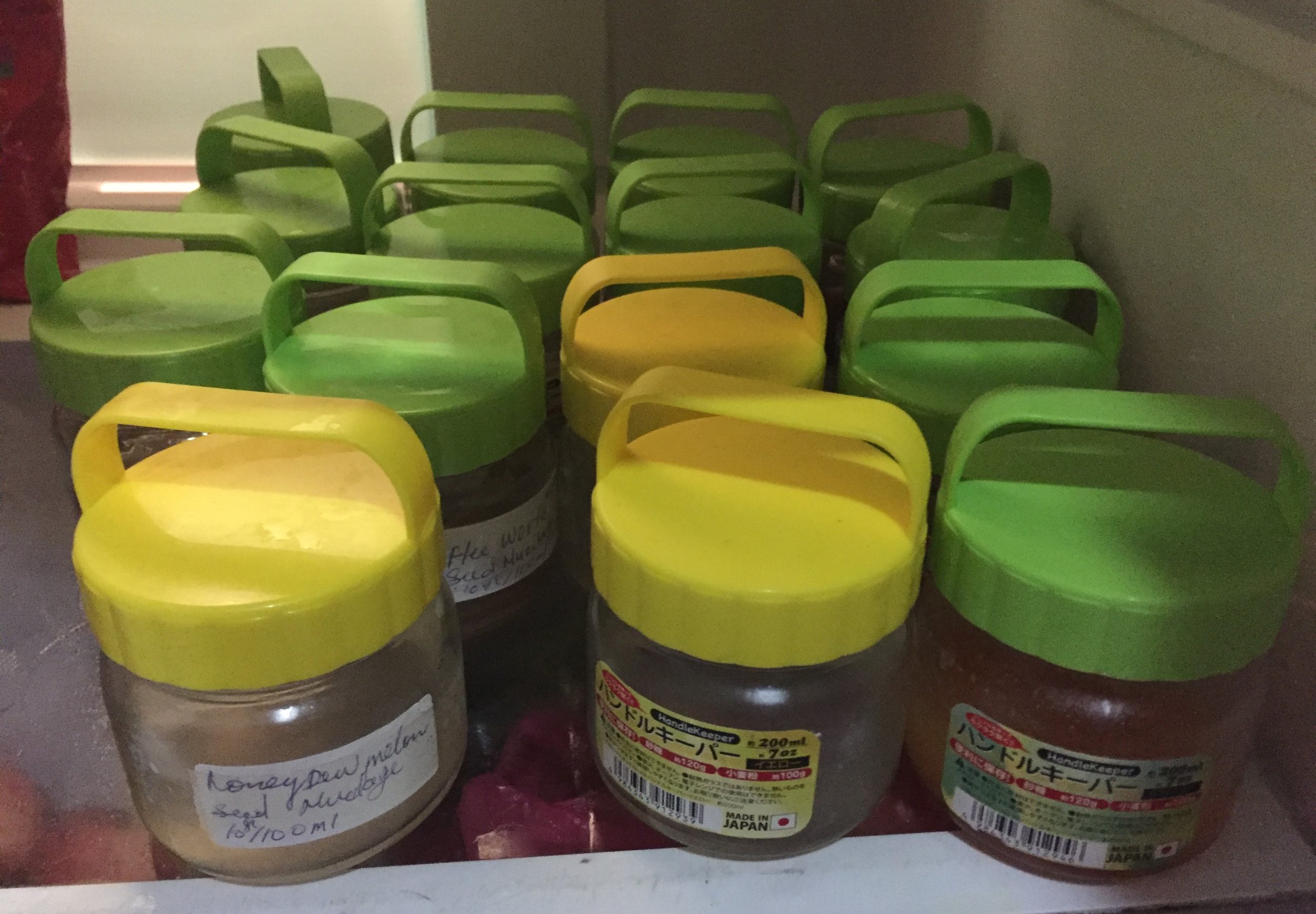MIXED SIZES
In Persian historical treatises limited recipes are mentioned to make the paper smooth and strong with a mixture of several sizes.
Recipes:
According to the recipe in Resāle dar Bayān-e Tariqe-ye Sāḵtan-e Morakkab va Kāḡaḏ-e Alvān (10th A.H./16th A.D.)., sweet melon juice, myrtle extract and sugar syrup are described as materials to be added to plant mucilages of psyllium and oil-free cooked rice to size paper. It says:
دیگر کاغذی که دارای رنگ پیروزه ناک باشد و مانع قلم باشد، تدبیر آن است که به آب خربزه شیرین یا به آب نبات مصری یا به آبِ مورد و با لعاب اسفیقول و لعاب برنج بی روغن [بگذارد که] مجموع مقوی کاعذ است، و چون کاغذ مهره زند مثلِ آینه نماید
The paper that is of a turquoise colour and prevents the pen from moving smoothly on it [during writing] can be fixed by sizing [paper] with sweet melon juice or Egyptian rock sugar or mucilage from myrtle seeds with mucilage from psyllium seeds and oil-free cooked rice mucilage. All these materials make paper strong, and if it is then burnished, it becomes smooth, just like a mirror.
It is possible that there was no deliberate intention to introduce these sizing materials as mixed sizes since the above text is quite like Resaleh-ye Joharrieh. In Resaleh-ye Joharrieh (837 AH/1433 A.D.) the word ‘or’ means ( یا) is replaced with the word ‘with’ means (با) as follows:
و کاغذی که بسیار تنک و پرزناک بود و قلم کاتب را بوقت سرعت کتابت مانع باشد، تدبیر آن است که به آب خربزه شیرین یا به آب نبات مصری یا به آبِ مورد و یا لعاب اسپغول یا حلیم برنج بی روغن و به چند چیز دیگر که مجموع مقوی کاغذ است، کاغذ تنک را قوی توان ساخت و پرزها که بر وی باشد و قلم کاتب را مانع و دافع سرعت حرکت شود بصلاح آرد
The paper that is thin and fluffy and prevents the reed pen from moving smoothly on it [during writing] can be fixed by sizing [paper] with either sweet melon juice or Egyptian rock sugar, or mucilage from myrtle seeds, mucilage from fleawort seeds or oil-free rice paste, and some other sizes which all make the paper strong. It makes the thin paper more resistant, and any protuberances can be ironed out and the reed pen of the calligrapher can run across the paper as it should.
Another mixed size is mentioned by an anonymous author in the (1005 A.H. /1596 A.D) in Majmu’at al-sanaye for sizing copy paper. Most probably, the author obtained the recipe from European sources as follows:
کیفیت آهار دادن کاغذ برای کاپی از اینقرار است: صمغ عربی دو جزء – نشاسته شش جزء – شب یمانی یکجزء – هر سه را جدا جدا در آب گرم سولیوش بسازند و بیامیزند. چون شیر گرم شود بر کاغذ بمالند و بعد از خشک شدن ملاحظه نمایند اگر جایی لکٌه یابند اصلاح کنند
To size paper for copying, follow these steps: Dissolve 2 parts gum Arabic, 6 parts starch, and 1 part alum separately in warm water, then mix them together. Apply the warm mixed solution onto the paper. After it dries, check for any stains, and if found, make the necessary repairs.
Experiment:
Mix sweet melon extract, rock sugar, or mucilage from myrtle seeds with mucilage from psyllium seeds and rice mucilage.
Alternatively, dissolve 2 parts Gum Arabic, 6 parts starch, and 1 part alum separately in warm water, then mix them together. Apply the warm mixed solution onto the paper. Smoothly apply the mixed sizing on the paper with a brush.
Let the mixed sized paper to dry and burnish the paper.





